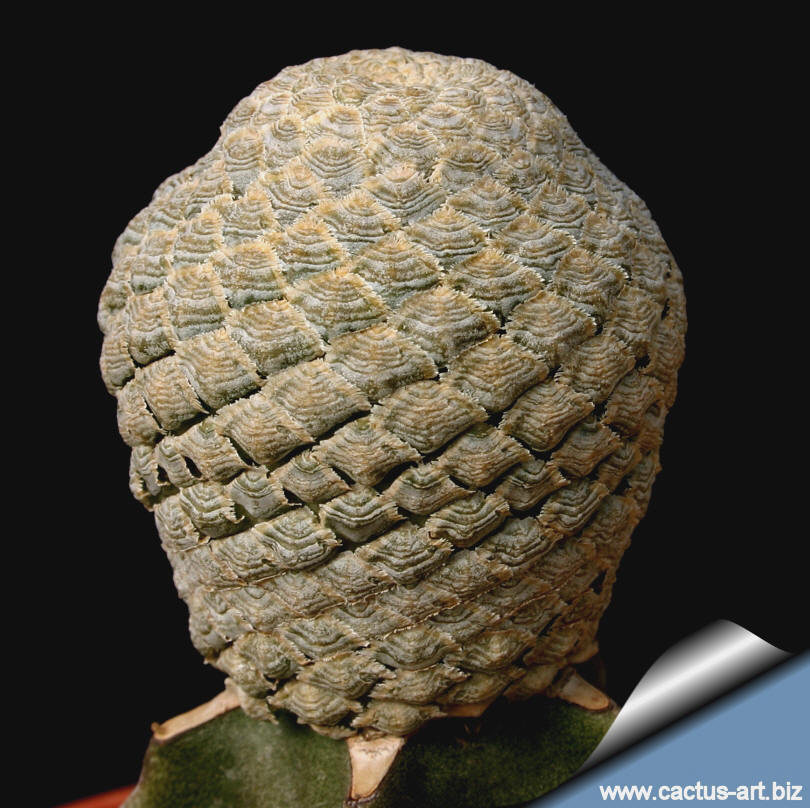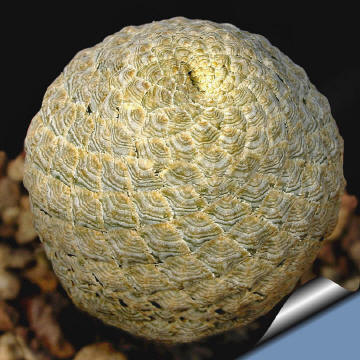|
|
|

Euphorbia piscidermis is a very unusual collectors plant and one of the
most remarkable of succulents.
|
|
 |
Description: This is a small succulent euphorbia covered with
characteristic “fish-scales” that looks something like a small golf
ball, It can branch slowly. When it is not in flower, no one would
suspect it of being a euphorbia.
Stems: Up to 12 cm tall, 7 cm in diameter covered with paste-white
fish-scale like
imbricate appendages.
Cultivation: The Fish Skin Euphorb is difficult to grow on its own
roots, and is generally grafted.
It is a difficult species to grow on its own roots and is usually
grafted for convenience on
E.
canariensis or
E. resinifera
but it can be easily degrafted by those who wish to try to grow them on
their own roots. If you remove an offset, remember to
let it dry for a week or so, letting the wound heal (cutting planted to
soon easily rot before they can grow roots). It is better to wash the
cut to remove the latex. They grow well in a very draining mineral
potting substrate.Frost Tolerance: Need frost protection. Sun Exposure: Light shade.
|
|
Photo of conspecific taxa, varieties, forms and
cultivars of Euphorbia piscidermis.
Advertising
|
|
|
|
|
Family:
Euphorbiaceae
Scientific name:
Euphorbia piscidermis
M.G.Gilbert 1974 (s)
Origin: It is native to Ethiopia (Ogaden), around 1000 m
of elevation.
Common Name: Fish Skin Euphorb
|
|

The stem is closely shingled with scale-like appendages. (The name 'piscidermis' comes from the Latin for 'fish-skin', refering to the
scale-covered skin) such scales being otherwise unknown in the genus
Euphorbia.
|
|
|
|
Grafting: The plants that are grafted on a more vigorous and easier
stocks are easier to keep, grow faster and produce more flowers and
seeds. The method of grafting euphorbias differs little from that of
other succulents, except in one important aspect. The latex must be
washed or sprayed off until hardly anything remains. After the latex
flow has stopped, a further 1-2 mm slice can be taken from both surfaces
without a new latex flow starting.
Both
scion and
stock need to be at the start of the growing season. The stock
should be cut as near as possible to the growing tip, as here the
vascular bundles are dense and not yet woody and will feed the scion in
the best possible way. Where possible stock and scion should be of
similar diameter. The cut surfaces are held together with elastic bands
in cross style, over the plant top and under the pot. The plants should
be left in an airy and shady place for 7-10 days before the bands are
removed.
Warning: As with all other Euphorbias when a plant get damaged it
exudes a thick white milky sap known as latex. This latex
is poisonous and particularly dangerous for the eyes, skin and
mucous membranes.
So pay extreme attention not to get any in your eyes
or mouth.
Cultivated plants must be handled carefully.


|
|